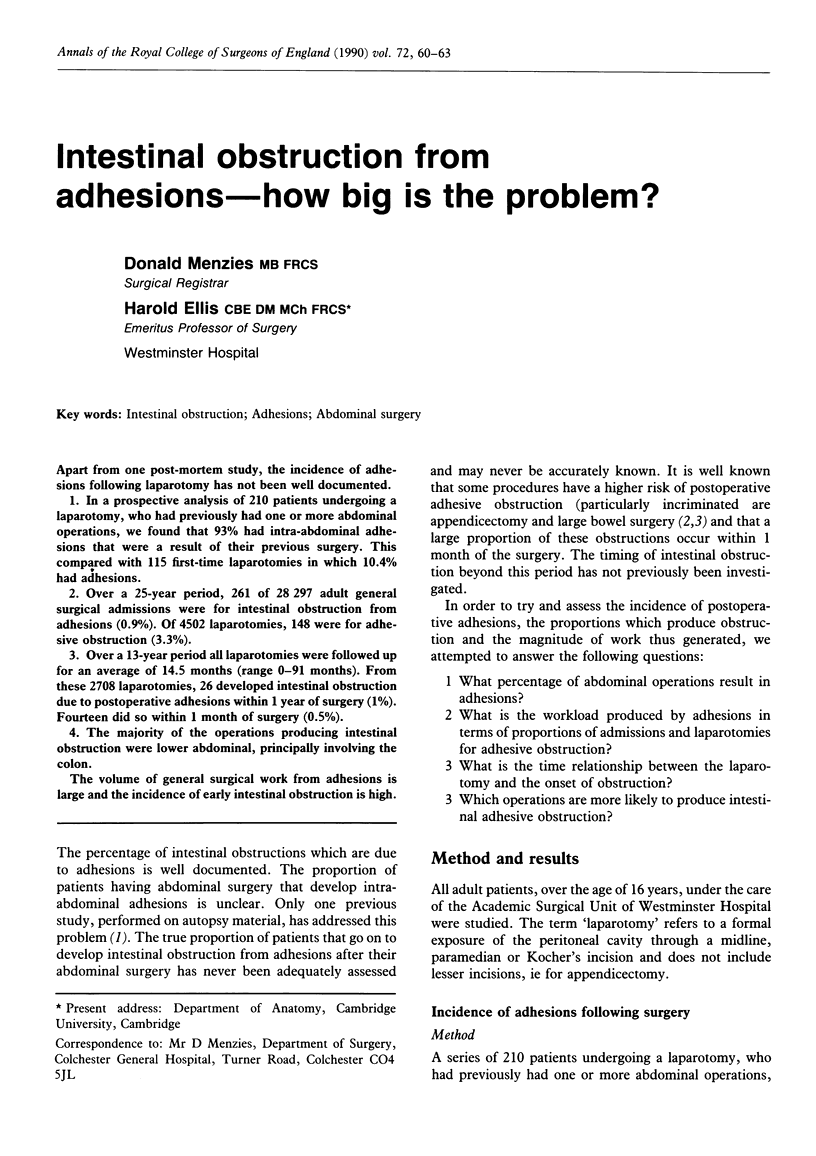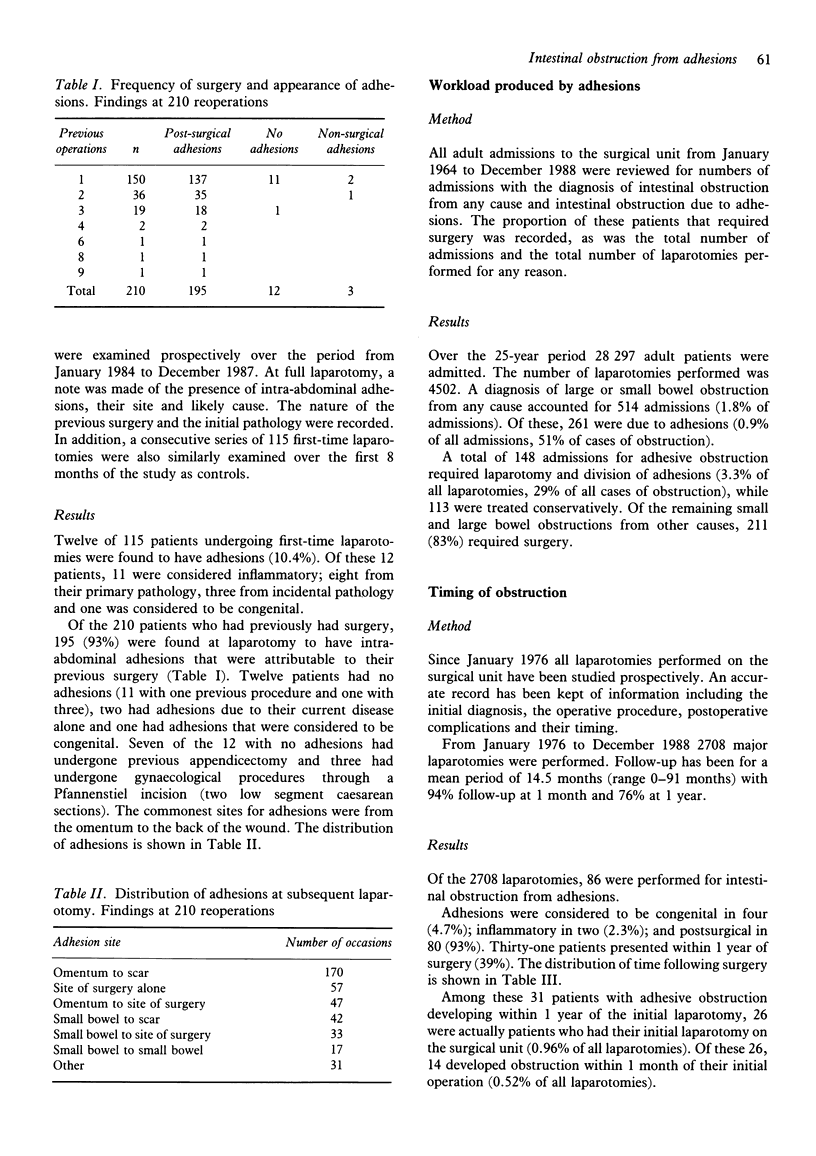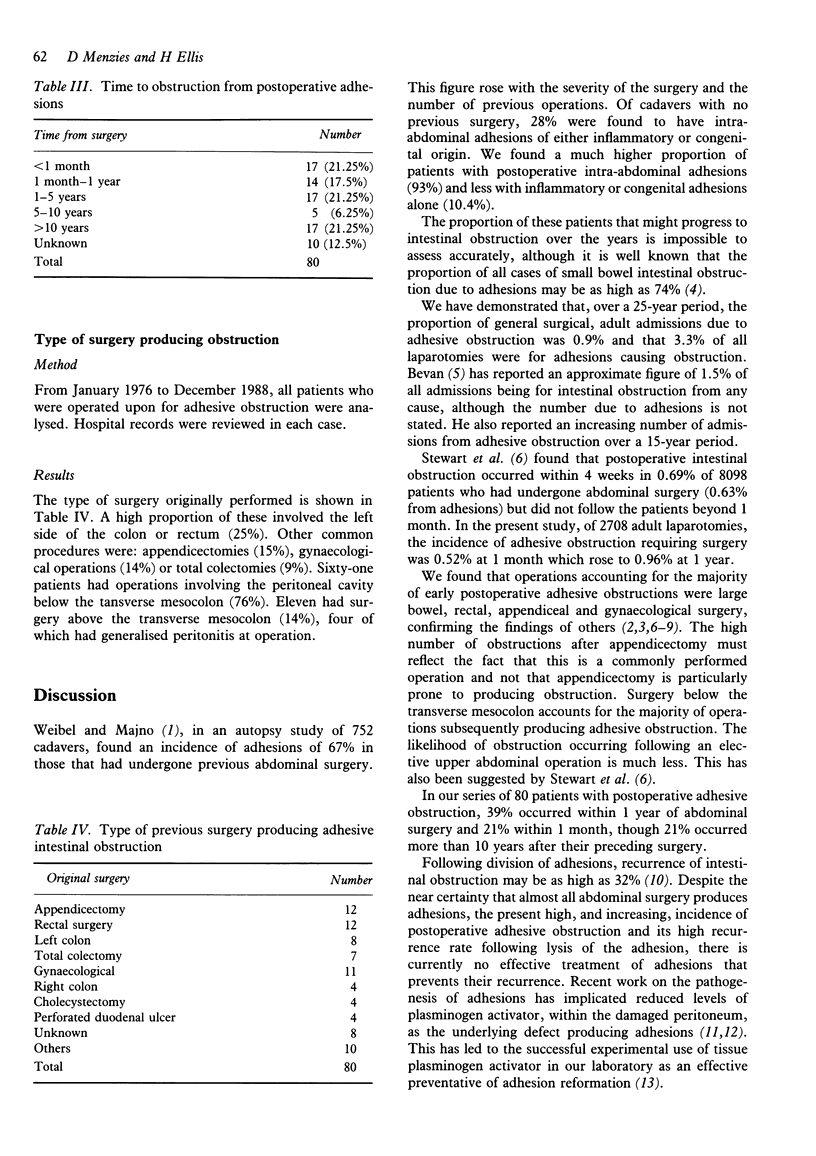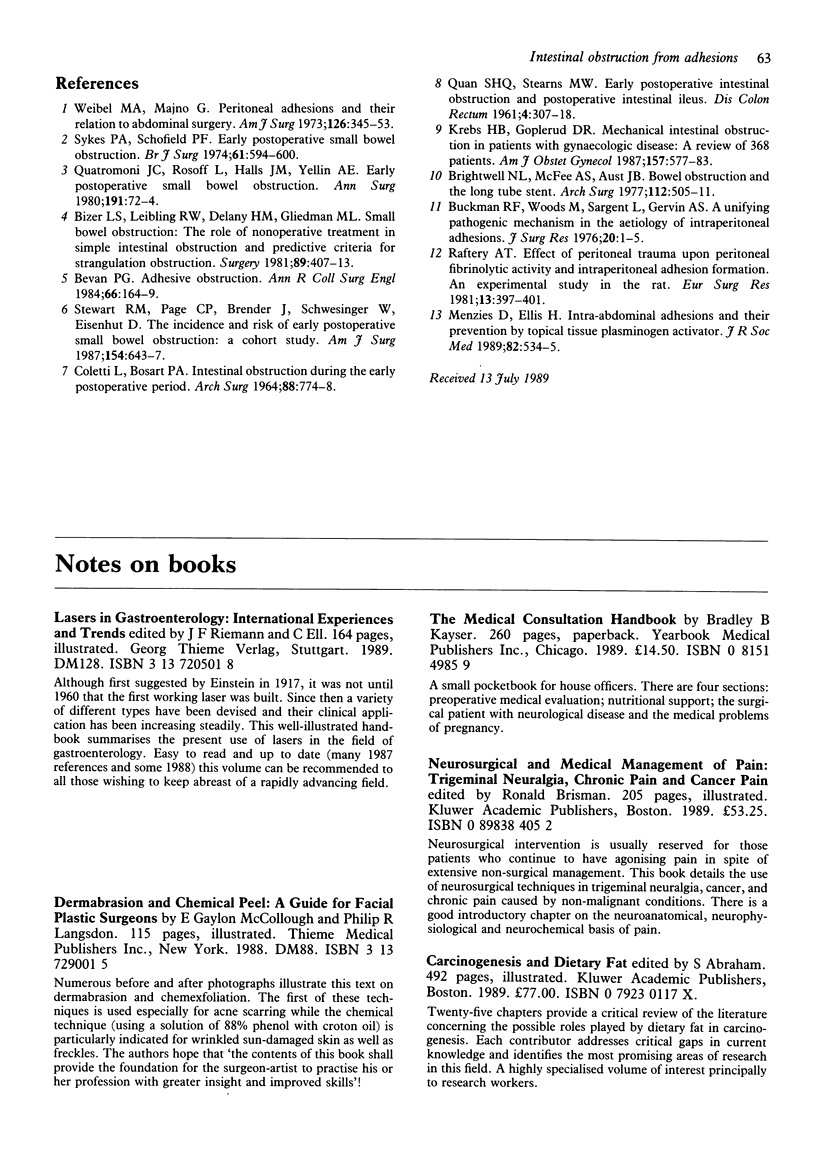Abstract
Apart from one post-mortem study, the incidence of adhesions following laparotomy has not been well documented. 1. In a prospective analysis of 210 patients undergoing a laparotomy, who had previously had one or more abdominal operations, we found that 93% had intra-abdominal adhesions that were a result of their previous surgery. This compared with 115 first-time laparotomies in which 10.4% had adhesions. 2. Over a 25-year period, 261 of 28 297 adult general surgical admissions were for intestinal obstruction from adhesions (0.9%). Of 4502 laparotomies, 148 were for adhesive obstruction (3.3%). 3. Over a 13-year period all laparotomies were followed up for an average of 14.5 months (range 0-91 months). From these 2708 laparotomies, 26 developed intestinal obstruction due to postoperative adhesions within 1 year of surgery (1%). Fourteen did so within 1 month of surgery (0.5%). 4. The majority of the operations producing intestinal obstruction were lower abdominal, principally involving the colon. The volume of general surgical work from adhesions is large and the incidence of early intestinal obstruction is high.
Full text
PDF



Selected References
These references are in PubMed. This may not be the complete list of references from this article.
- Bevan P. G. Adhesive obstruction. Ann R Coll Surg Engl. 1984 May;66(3):164–169. [PMC free article] [PubMed] [Google Scholar]
- Bizer L. S., Liebling R. W., Delany H. M., Gliedman M. L. Small bowel obstruction: the role of nonoperative treatment in simple intestinal obstruction and predictive criteria for strangulation obstruction. Surgery. 1981 Apr;89(4):407–413. [PubMed] [Google Scholar]
- Brightwell N. L., McFee A. S., Aust J. B. Bowel obstruction and the long tube stent. Arch Surg. 1977 Apr;112(4):505–511. doi: 10.1001/archsurg.1977.01370040157024. [DOI] [PubMed] [Google Scholar]
- Buckman R. F., Woods M., Sargent L., Gervin A. S. A unifying pathogenetic mechanism in the etiology of intraperitoneal adhesions;. J Surg Res. 1976 Jan;20(1):1–5. doi: 10.1016/0022-4804(76)90075-5. [DOI] [PubMed] [Google Scholar]
- COLETTI L., BOSSART P. A. INTESTINAL OBSTRUCTION DURING THE EARLY POSTOPERATIVE PERIOD. Arch Surg. 1964 May;88:774–778. doi: 10.1001/archsurg.1964.01310230050011. [DOI] [PubMed] [Google Scholar]
- Krebs H. B., Goplerud D. R. Mechanical intestinal obstruction in patients with gynecologic disease: a review of 368 patients. Am J Obstet Gynecol. 1987 Sep;157(3):577–583. doi: 10.1016/s0002-9378(87)80010-8. [DOI] [PubMed] [Google Scholar]
- Menzies D., Ellis H. Intra-abdominal adhesions and their prevention by topical tissue plasminogen activator. J R Soc Med. 1989 Sep;82(9):534–535. doi: 10.1177/014107688908200909. [DOI] [PMC free article] [PubMed] [Google Scholar]
- QUAN S. H., STEARNS M. W., Jr Early postoperative intestinal obstruction and postoperative intestinal ileus. Dis Colon Rectum. 1961 Sep-Oct;4:307–318. doi: 10.1007/BF02627226. [DOI] [PubMed] [Google Scholar]
- Quatromoni J. C., Rosoff L., Sr, Halls J. M., Yellin A. E. Early postoperative small bowel obstruction. Ann Surg. 1980 Jan;191(1):72–74. doi: 10.1097/00000658-198001000-00014. [DOI] [PMC free article] [PubMed] [Google Scholar]
- Raftery A. T. Effect of peritoneal trauma on peritoneal fibrinolytic activity and intraperitoneal adhesion formation. An experimental study in the rat. Eur Surg Res. 1981;13(6):397–401. doi: 10.1159/000128208. [DOI] [PubMed] [Google Scholar]
- Stewart R. M., Page C. P., Brender J., Schwesinger W., Eisenhut D. The incidence and risk of early postoperative small bowel obstruction. A cohort study. Am J Surg. 1987 Dec;154(6):643–647. doi: 10.1016/0002-9610(87)90234-0. [DOI] [PubMed] [Google Scholar]
- Sykes P. A., Schofield P. F. Early postoperative small bowel obstruction. Br J Surg. 1974 Aug;61(8):594–600. doi: 10.1002/bjs.1800610803. [DOI] [PubMed] [Google Scholar]
- Weibel M. A., Majno G. Peritoneal adhesions and their relation to abdominal surgery. A postmortem study. Am J Surg. 1973 Sep;126(3):345–353. doi: 10.1016/s0002-9610(73)80123-0. [DOI] [PubMed] [Google Scholar]


